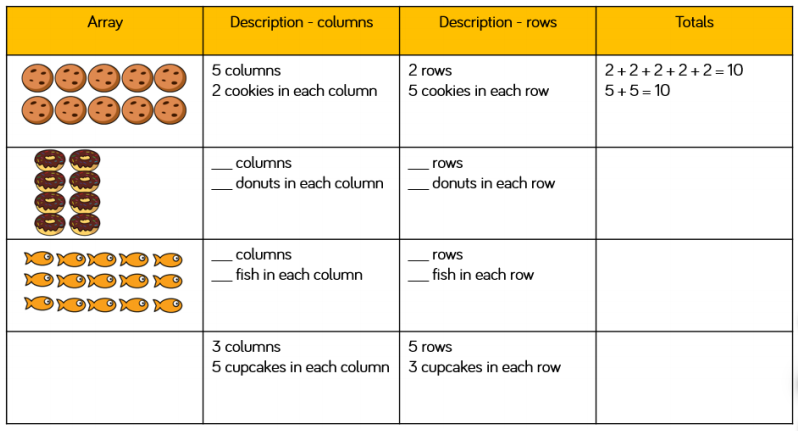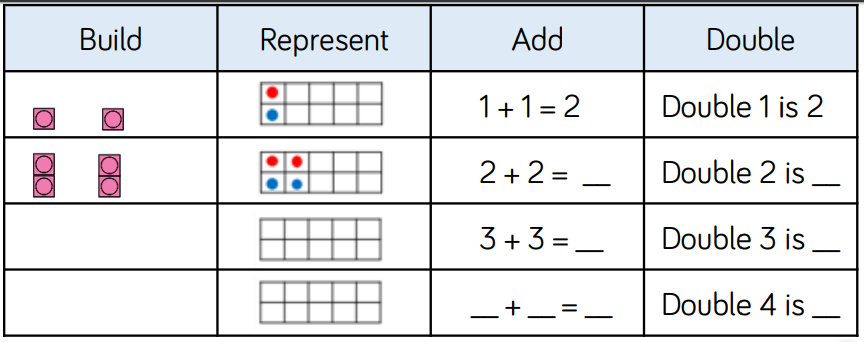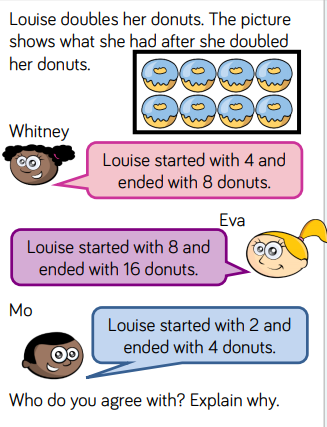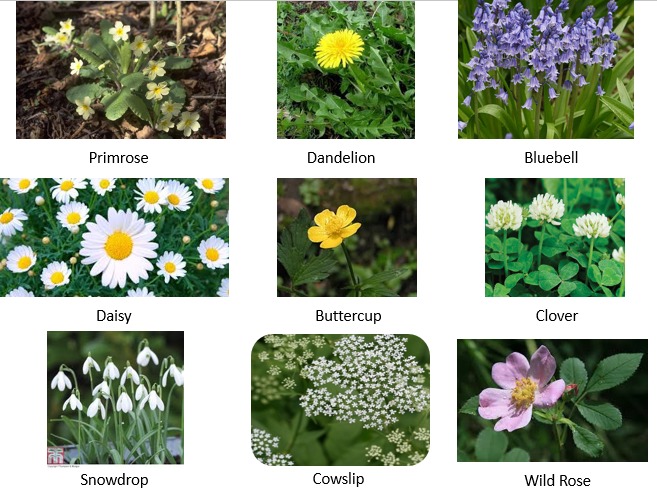Here are some suggestions for next week’s Home Learning. However, we wanted to reassure you that we understand everyone is in different situations. Please don’t feel under pressure to complete all the work we set. Some of you will have more time than others and some will be learning in different ways.
Contact us by email if you have any questions and thank you – you’re all doing an amazing job.
l.thorn@wransom.herts.sch.uk
s.kholodenko@wransom.herts.sch.uk
a.morris@wransom.herts.sch.uk
Follow us on Twitter @YearOneWR
Maths – Arrays and Doubles
Again please work through at your child’s own pace. Start with the first task and as your child becomes confident with that then move on to the next one. For extra practise or to consolidate their learning, there are worksheets to download and work through for each step.
Arrays
This week we will begin to make arrays by making equal groups and building them up in columns or rows. An array in maths is an arrangement of objects, numbers or pictures in columns or rows. The purpose of an array is to help children understand multiplication and division.
Columns go up and down. Rows go left to right across.
- Take 10 counters (or whatever you have) and make an array. Make sure your columns are equal and your rows are equal. How many rows do you have? How many columns do you have?
- Complete the columns and rows worksheet below.
- Complete the table. You can draw it out in your book and use counters/Lego/beads etc to help you.

- For further practise complete these sheets.
- To extend your learning complete these questions. Remember to explain how you know.
Maths – Doubles
- Roll a die – how quickly can you double the number?
Sing the doubles rhyme to someone in your house. Can you remember the actions?
1 and 1 is 2, 1 for me and 1 for you
2 and 2 is 4, that’s a couple more etc.
Practise your doubles using The Top Marks, Hit the Button website. - Complete and continue the table below. You can draw it out in your book and use counters/Lego/beads etc to help you. Can you double to 20?

- For further practise complete these sheets.
- To extend your learning complete these questions. Remember to explain how you know.

English – Phonics
Group 1: This week’s sound is ‘ey’ as in monkey.
Activities
- Practise writing these words with the ‘ey’ sound: key, honey, valley, monkey, turkey. Explain the meaning of the words if they are new. Perhaps have a go at drawing a picture for the words and label them.
- Play Buried Treasure on www.phonicsplay.co.uk. Click on the link for free phonics play, parents, phase 5, buried treasure and then on our sound of the week.
- What other ways are there of spelling the ‘ey’ sound? (ee, ea, e-e, ie, y) Write all the options along the top of a page and see how many words you can come up with for each spelling.
- Choose a word with the ‘ey’ sound and spelling and write a sentence with that word in it.
Group 2: This week’s sound is ‘ear’ as in ear.
Activities
- Practise writing these words with the ‘oi’ sound: oil, coin, soil, join, point, toilet
- Play Buried Treasure on www.phonicsplay.co.uk. Click on the link for free phonics play, parents, phase 3, buried treasure and then on our sound of the week.
- Choose a word with the ‘oi’ sound and write a sentence with that word in it.
- Practise writing the following capital letters and lower case letters: Nn, Oo, Pp, Qq, Rr, Ss
Grammar Task – When to use a or an
English – Superheroes continued
Here are some activities – you may want to choose one or two or you may want to do them all.
Poster
Did you have a villain in your superhero story? Or did the superhero you created fight the same evil person every time? Maybe you didn’t have a villain? Could you think of someone or something your superhero has to fight? We’d like you to create a WANTED! poster to help try to catch the villain(s) in your stories. Remember the three main parts of a poster – the big heading to grab people’s attention, a picture and some information.
Comic Strip
Have you ever read a comic or seen one? They are great to read! Google comic strips and you will find many examples. See how many of these features of a comic strip you can find in the comic strip you found on Google:
- Comic strips are a bit like a storyboard. The page is broken up into boxes and each box shows part of the story.
- The pictures are really important and show all the action.
- Small parts of the story might be written in each box.
- What the characters say is written in speech bubbles.
- Sound effects are written in capital letters in zig zaggy splats.
Can you turn your superhero story from last week into a comic strip? Here is a template you could use or you could just divide a page up into boxes.
Comprehension task
Have a go at the reading comprehension tasks on superheroes provided below. If you find the first one easy have a go at the second one!
Science – Wild Plants
What is a wild plant?
- A wild plant seed grows where it falls.
- It doesn’t need to be planted.
- It doesn’t need to be cared for as it grows.
- If a wild plant grows where it is not wanted, it might be called a weed.
- Can you name any weeds or wild plants?
Here are some wild flowers.
How many can you spot in your garden or on your daily exercise?
Record the name (if known), flower colour, leaf shape, how many (you could do a tally mark) and where you found it e.g. shady area/in the sunlight.

History – The First Flight
People had tried to fly for many years. Having watched birds fly, they tried to copy them in many different ways. Watch this clip to see some unsuccessful attempts!
So when someone actually achieved flight it was an incredible moment!
The Wright brothers, Orville and Wilbur, were two American aviation pioneers credited with inventing, building, and flying the world’s first successful aeroplane.
What can you find out about The Wright brothers? To find out more you could look in books, use a computer (remember to check with an adult first) or look through the Power point below. Write the information you discover in your Home Learning book in complete sentences.
Geography – Local area
Well done if you managed to carry out a traffic survey last week. Don’t worry if you didn’t manage to!
All around our streets and roads there are many traffic signs. These signs help to keep us and the roads safe. They are everywhere but you may not have noticed them! Complete the sheet researching what the different road signs mean. Watch the powerpoint all about road safety.
https://www.twinkl.co.uk/resource/t-tp-1213-super-cats-road-safety-story-powerpoint
Art
We have loved seeing all of your amazing Superhero work for English! You have all been so creative with your ideas and we’ve seen some amazing illustrations, well done.
The British Library website ( see link below ) has some brilliant resources linked to children’s books. They have a fantastic section on Superheroes and how authors create their Superheroes. This is well worth a read.
For your art this week we’d like you to have a go at Activity Two – Changing Into Your Costume. You’ll need to scroll down quite a long way. Scroll past Activity One – but don’t worry, we’ll be having a go at this at a later date! We look forward to seeing your creations and remember to email them to Mrs Morris if you’d like to see your work on our website page!
https://www.bl.uk/childrens-books/activities/what-makes-a-hero-super
PSHE – Grow a rainbow!
Many of you have spent time creating and putting up rainbows at home. These have come to be a symbol of hope and positivity during a time when things are a little upside down.
Have a go at this little activity ( see link below ) which asks you to grow a rainbow. We think you’ll find it fun! You’ll just need paper towel, 2 glasses of water and felt tip pens. Have fun!
https://www.thebestideasforkids.com/grow-a-rainbow-experiment/

